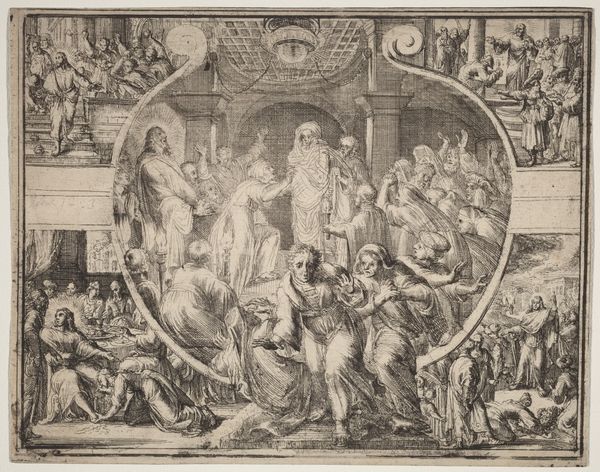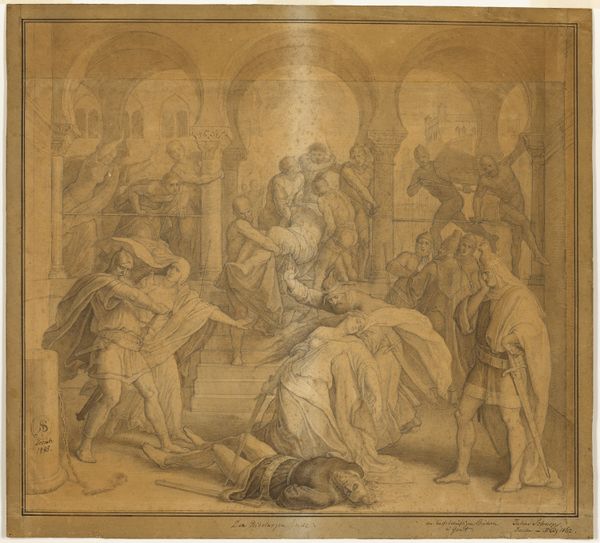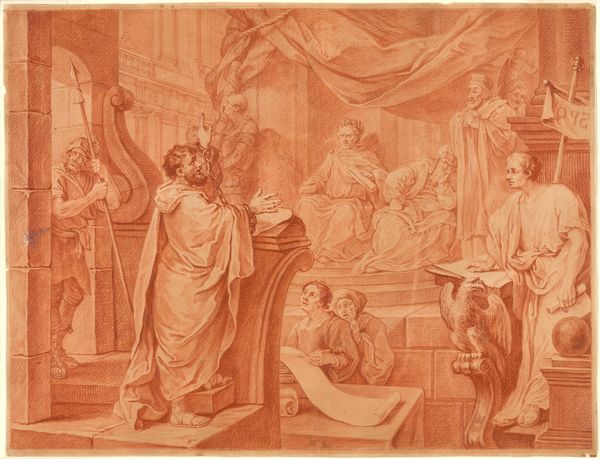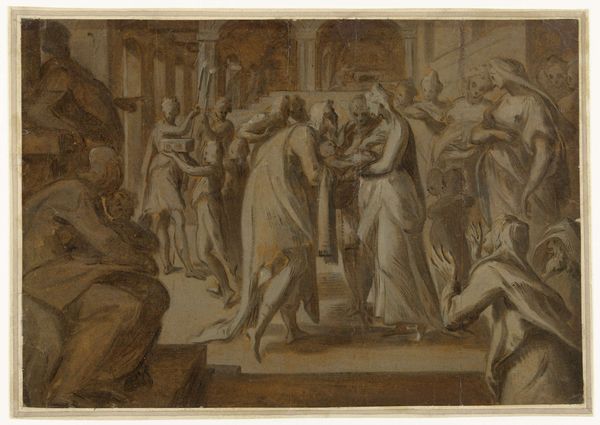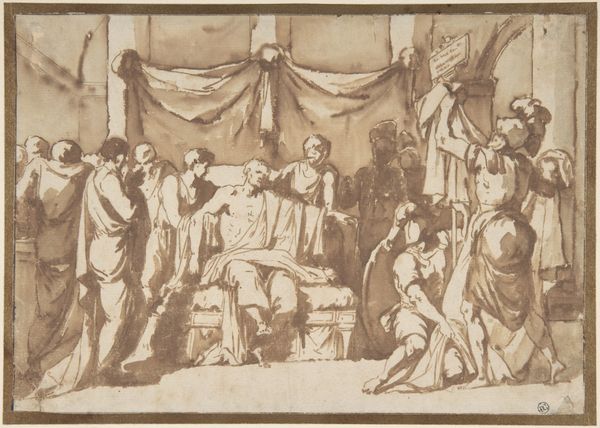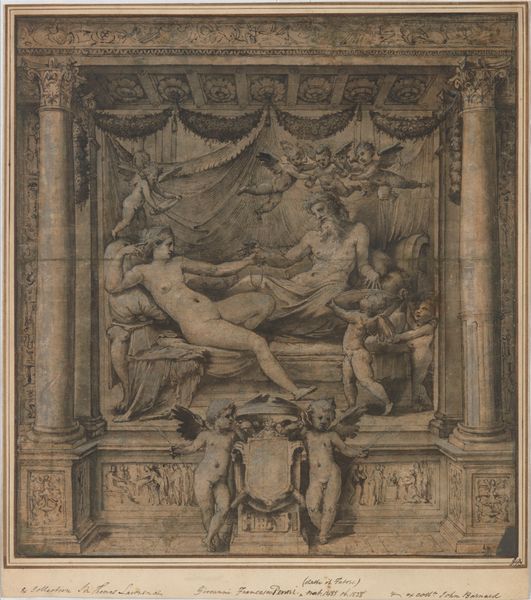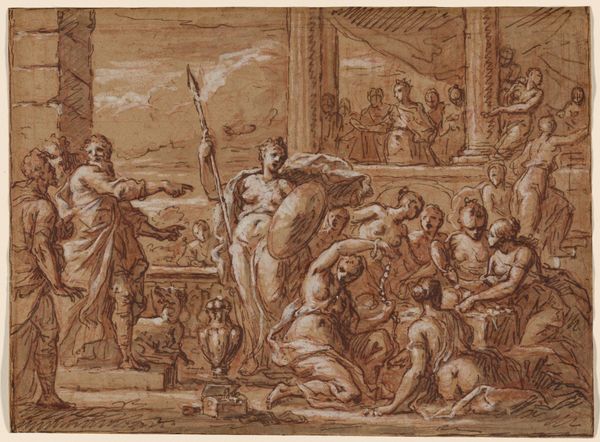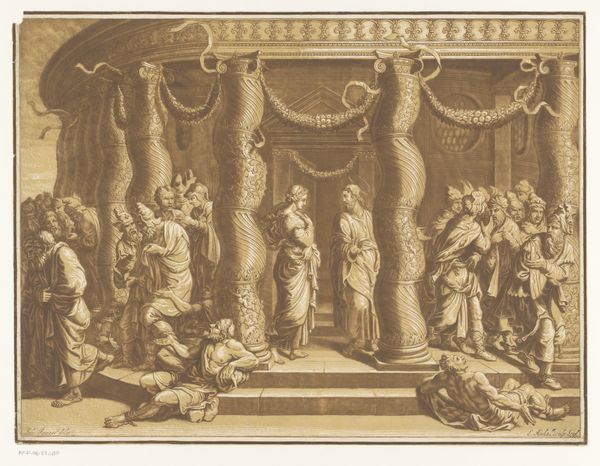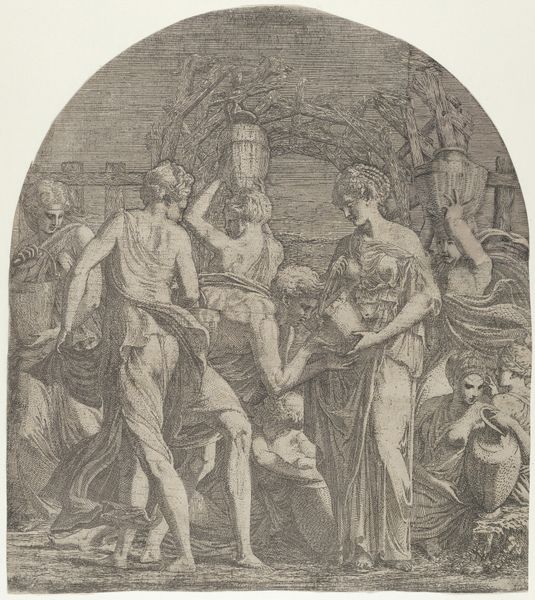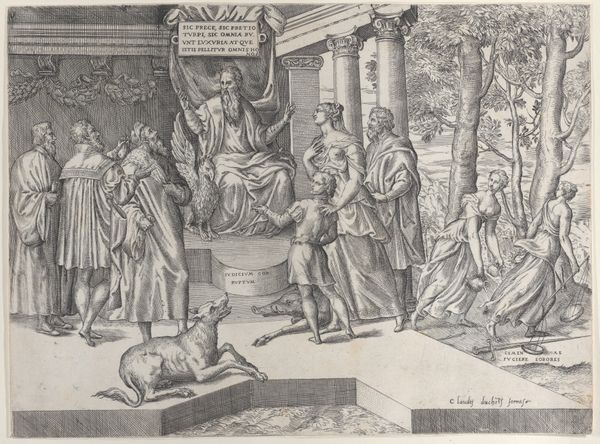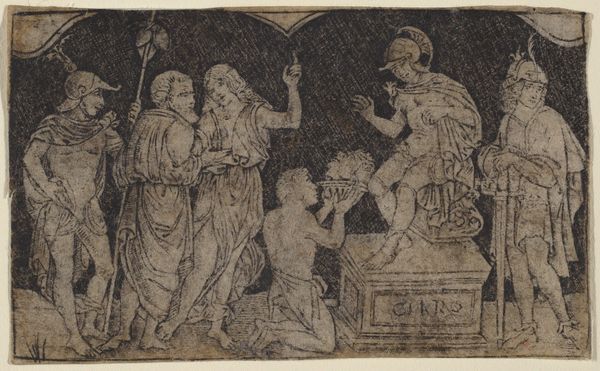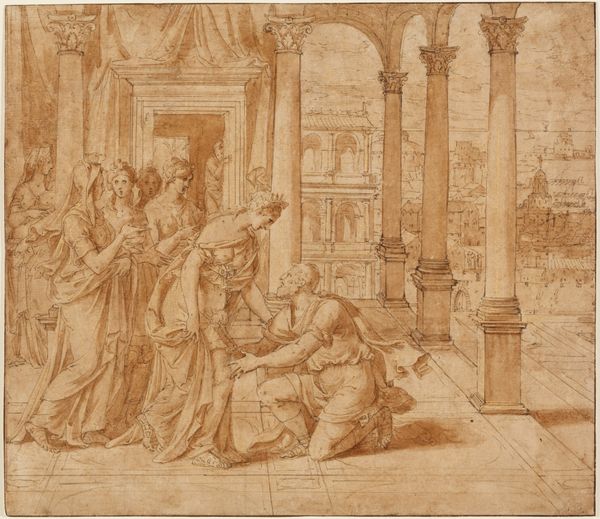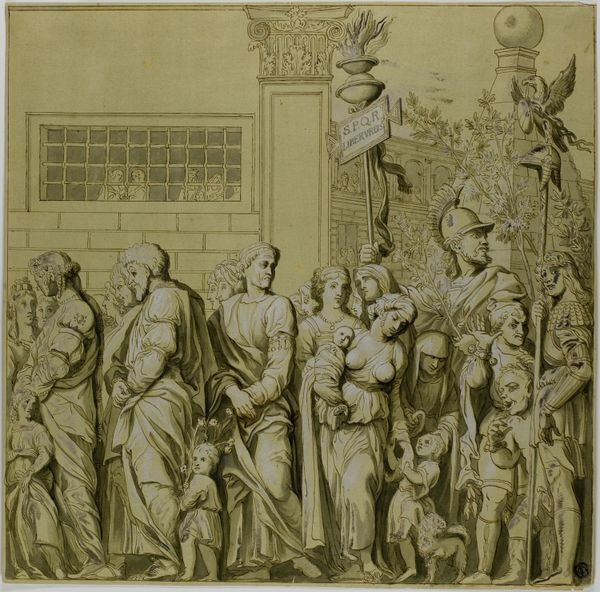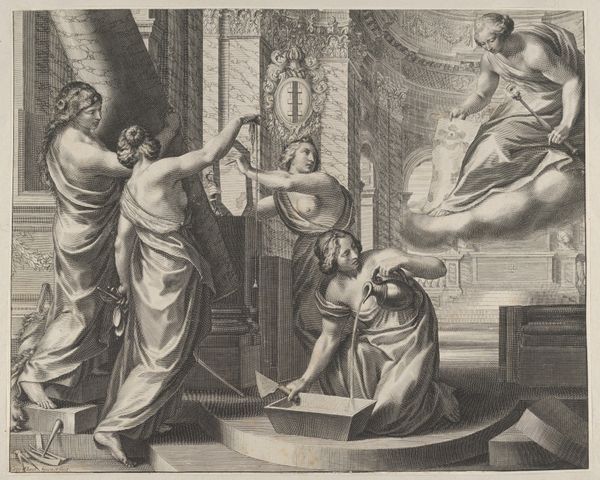
silk, textile
#
baroque
#
silk
#
stain glass
#
textile
#
mannerism
#
figuration
#
traditional architecture
#
history-painting
Copyright: Public Domain
"The Coronation Sacrifice" is a tapestry made by Laurent Guyot sometime around the late 18th century. Tapestries like this one were more than just decorative; they were powerful signifiers of wealth and status, adorning the walls of the elite. Guyot presents a scene of ritual sacrifice, with figures draped in classical garb. The act of sacrifice, often involving animals, was a way to seek favor from the gods or legitimize power. What does it mean to display this? The tapestry shows the bodies of idealized figures. The way the figures are rendered—smooth, fair-skinned, and seemingly ageless—speaks to a very specific, and exclusionary, concept of beauty. This is a world that's carefully curated, where power, beauty, and ritual intertwine, reinforcing existing social structures. As we consider this tapestry, we might reflect on what sacrifices, literal or symbolic, we continue to make in the name of power and tradition.
Comments
minneapolisinstituteofart almost 2 years ago
⋮
Queen Artemisia and her son, Lygdamis, kneel before a marble altar asking God's blessing before Lygdamis is crowned king. The high priest pours wine over the sacrificial bull while trios of children sing songs of praise. Behind the queen regent and her son are courtiers and attendants. In 17th century France, religious feeling ran high. This scene was meant to convey the commitment of queen regent Marie de' Medici and her son Louis XIII to continuing the French Catholic state and also to inspire viewers by the example of their rulers' faith. From the Stories of Queen Artemisia series.
Join the conversation
Join millions of artists and users on Artera today and experience the ultimate creative platform.
